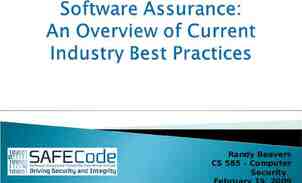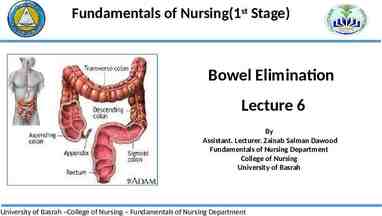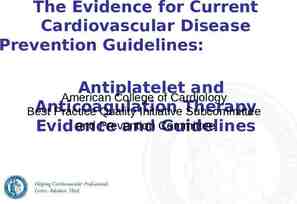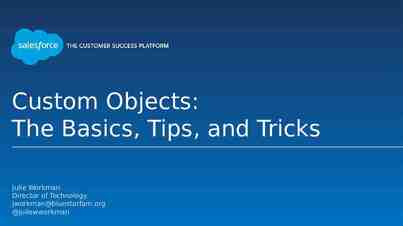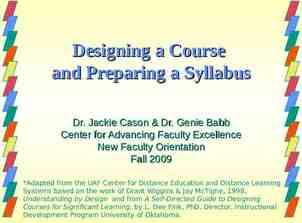Responding to Sexual Harassment under the New Title IX Regulations
47 Slides1.63 MB

Responding to Sexual Harassment under the New Title IX Regulations Presented by: Haley Turner

What is Title IX? Title IX of the Education Amendments of 1972 Title IX is all of 37 words. It prohibits discrimination based on sex in educational institutions that receive federal financial assistance. Harassment based on sex is a form of discrimination based on sex. This has been established in the law for a long time. Specific guidance on compliance has been limited, until now. No officially adopted regulations addressing sexual harassment or school response Primary guidance from court interpretations and “Dear Colleague” letters issued by the Department of Education (DOE).

New Regulations The Department of Education has developed and adopted new regulations governing a school’s response to sexual harassment. Effective date: August 14, 2020, unless stopped by court order. There is one suit already pending, filed by the ACLU.

The District Should Train All Employees All employees are potential reporters and must report. Districts should train ALL employees on this responsibility. If you do not use an outside trainer, then the T9C is likely going to be tasked with this training. 4

Who Should be the Title IX Coordinator? 5

Key Roles Outlined in Regulations Title IX Coordinator Investigator Decision Maker Facilitator Appeals Decision Maker

Overview The Title IX Coordinator (“T9C”) coordinates the district’s efforts to comply with Title IX of the Education Amendments of 1972. The new regulations set to take effect on August 14, 2020 significantly expand and change the role and responsibilities of the Title IX Coordinator (“T9C”) with regard to dissemination of information, training, setting standards, and conducting investigations. 7

Role of Title IX Coordinator (T9C) Overview Every district must have at least one, and that person must be designated as and identified as the “Title IX Coordinator”. Must have authority to coordinate the school district’s compliance efforts. May investigate complaints, but may not be the “decision maker.” Must be referred to as the “Title IX Coordinator” in district policies and publications, including website. A district must notify all potential reporters of sexual misconduct of the T9C’s contact information: name/title, 8

Key Terms and Concepts 9

Definitions: Sexual Harassment Six Types of Sexual Harassment Quid pro quo Hostile environment Sexual assault Dating violence Domestic violence Stalking

Terminology Complainant victim of sexual harassment Respondent person accused of sexual harassment Formal Complaint vs. “Report” by anyone while may be initiated by T9C report is verbal or in writing a formal complaint complainant or *Actual Knowledge when any employee has knowledge Substantial Control over both the alleged harasser and the context in which the harassment occurred Education program or activity any academic, extracurricular, vocational or other education program operated by a district 11

What does “actual knowledge” mean? This term is important because the school’s duty to respond arises only when it has “actual knowledge” of sexual harassment, or of allegations of conduct that, if true, would constitute sexual harassment. Under the regs, the school has “actual knowledge” when any employee of the school--other than the actual perpetrator of the harassment—has actual knowledge. What has changed? Previously, actual knowledge was imputed to the school only when it was known by someone who had the authority to address it. Now, it is any employee. 12

What does “substantial control” mean? The school is not responsible for responding to allegations of sexual harassment unless the school had “substantial control” over the harasser and the “context.” Consider how this will be applied to: extracurricular activities; field trips; out of town, overnight trips; cyberbullying off campus. Scenario: Student engages in cyberbullying off campus and on the weekend. Does the school have “substantial control”? What about state law which gives schools the authority to discipline students for certain off campus cyberbullying?

Supportive Measures Supportive Measures Non-disciplinary, non-punitive individualized services offered to Complainant or Respondent at no charge designed to “restore or preserve equal access to the education program or activity without unreasonably burdening the other party” whether or not a formal complaint is filed. Examples: Counseling. Mutual restrictions on contact. Modification of schedule. Campus escort services. 14

What constitutes a report of sexual harassment? 15

Reporting Any person may report. Not just the alleged victim. Can be verbal or written. Can be made my mail, by telephone, or by email at any time (business or non-business hours) to the T9C or any employee. T9C may also receive report from any employee who observes or receives notice of sexual harassment or alleged sexual harassment. All employees need to know the designated person to whom they should turn over sexual harassment allegations. 16

The Duty to Respond: If the district has “actual knowledge” of “sexual harassment” it “must respond promptly in a manner that is not deliberately indifferent.” Actual knowledge notice or awareness of sexual harassment or allegations of sexual harassment received by any employee. The district’s response must not be “clearly unreasonable in light of the known circumstances. 17

Timeliness and Eligibility Although reports of sexual harassment should be made in a timely manner, unlike other district grievances, a sexual harassment complaint can be made as long as the Complainant and Respondent are either or both still enrolled in the district or are the beneficiaries of the district’s programs. Include years in all documentation to avoid confusion. 18

Responding to a “Report” T9C must promptly contact a complainant to discuss: 1. The Report 2. Supportive Measures 3. Process to file Formal Complaint Initial fact finding during this discussion will guide the determination of whether the allegations, if assumed true, meet the definition of sexual harassment. 19

Consider this . Dad calls A/P alleging his daughter was called an offensive word and tapped on the backside by a boy during school hours, at the school. This is a Report of conduct that is sexual in nature. T9C offers supportive measures and informs Dad and daughter of the Formal Complaint process. Dad just wants the behavior stopped and does not file a Formal Complaint. Boy admits conduct, but conduct falls short of the Title IX definition of “sexual harassment.” Title IX process ends. May discipline in accordance with Student Code of Conduct as appropriate. Disciplinary action should not be labeled as “sexual harassment.”

But What if . Dad (on behalf of daughter) files a Formal Complaint. “The recipient must investigate the allegations in a formal complaint. If the conduct alleged in the formal complaint would not constitute sexual harassment as defined in 106.30 even if proved . then the recipient must dismiss the formal complaint for purposes of sexual harassment under Title IX or this part; such a dismissal does not preclude action under another provision of the recipient’s code of conduct.” 34 CFR 106.45(b)(3)(i).

But What if the Conduct Went Further . During the meeting with T9C, dad alleges that the boy is also leaving sexually explicit notes in the student’s notebook and sending sexually suggestive text messages and tweets. Need to reevaluate the allegations under the definition of “sexual harassment”. Dad is not satisfied that supportive measures are enough and files a Formal Complaint.

What is the impact to your normal process? The standard process of responding to a student concern will not significantly change: Listen to the concerns; Ask questions to understand the issues; Discuss/identify/offer interim actions to address the student’s concerns; Investigate and take appropriate action to address the behavior of the other student. BUT – now you are also required to inform the student of the right to file a formal complaint.

How does all this mesh with our Code of Conduct? The regulations restrict the use of “emergency removal” of a person from the educational program unless: 1) there is an individualized safety/risk analysis; 2) there is an immediate threat to the physical health or safety of the person to be removed or others; and 3) the person removed is given notice and an opportunity to challenge the decision immediately after the removal. You can still take disciplinary action for violations of the SCC. Follow the emergency removal process if the student is being removed for “sexual harassment.” 24

Step-by-Step Guide for T9C’s Response to a Formal Complaint

Formal Complaint The regs distinguish a “report” from a “formal complaint.” A “formal complaint” is a printed document or electronic submission filed by a complainant that alleges sexual harassment and requests the recipient school investigate the allegation. At the time of filing a formal complaint, a complainant must be participating in or attempting to participate in the education program or activity of the recipient with which the formal complaint is filed. 26

Who can file a formal complaint? After a Report is made, a Formal Complaint process may be initiated on that Report. Only Complainant or the T9C can initiate. T9C may initiate the process even when the Complainant chooses not to. A formal complaint process does not need to be filed for the district to investigate and take action on the report. 27

Formal Complaint Considerations Must dismiss a Formal Complaint if the conduct alleged does not constitute “sexual harassment.” Does not preclude action under another provision of the district’s code of conduct. May dismiss a Formal Complaint if: Complainant notifies T9C in writing that the complainant wishes to withdraw the Formal Complaint. Complainant is no longer enrolled or employed by the district. Circumstances prevent the district from gathering sufficient evidence to make a determination. 28

Responding: Benchmarks for Response to Formal Complaint of Sexual Harassment 1. Equal Access/Treatment 2. Objective Evaluation 3. Bias Free Training 4. Presumption of Innocence 5. Reasonable Time Frames 6. Description of Possible Outcomes 7. Standard of Evidence – Preponderance or Clear and Convincing 8. Appeal 9. Supportive Measures 10. Protection of Privilege 29

1. Provide Written Notice Upon receiving a formal complaint, an institution must provide written notice to the known parties, including: Description of the process, including informal resolution process Allegations involved Statement of presumed innocence of the respondent The parties’ right to an advisor of their choice (who may be an attorney) Parties’ right to inspect evidence relevant to the allegations Identify any provision in the SCC that prohibits knowingly 30

1. Provide Written Notice Must allow sufficient amount of time for respondent to prepare a response before any initial interview. Must be supplemented each time new allegations are opened for investigation. 31

Informal Resolution May offer informal resolution options, like mediation, as long as both parties give voluntary, informed, written consent. Cannot require a party waive their right to investigation or to participate in informal resolution as a condition of enrollment or employment. Cannot offer informal resolution until a formal complaint is filed and cannot ever offer informal resolution of allegations of sexual harassment by an employee against a student. Any party may withdraw from the informal resolution process and resume the grievance process at any point before an agreement is reached. 32

2. Investigate Formal Complaint Investigations of Title IX grievances come with additional requirements. Investigations must: Place the burden of proof and responsibility to gather evidence on the institution, not on the parties; and Present an equal opportunity for parties to present witnesses and other evidence. Note: the investigation must provide opportunities for the parties to present evidence, but the burden of proof remains on the institution to gather and present evidence 33

Investigation vs. Investigation Investigation #1: Initial fact finding In order to determine who made the report, the contents of the report, whether the alleged conduct could constitute “sexual harassment”, etc. Likely conducted by a campus administrator. Will determine what process should be used to respond to the report. Investigation #2: Title IX investigation Investigation required following the filing of a Formal Complaint The following slides will focus on Investigation #2, the 34

2. Investigate Formal Complaint Permit parties to discuss allegations under investigation and gather relevant evidence. Provide parties with equal opportunity to have others present during any complaint proceeding. Provide advance written notice of all hearings, interviews, or other meetings to any involved party, with sufficient time for the party to prepare. 35

2. Investigate Formal Complaint Provide equal opportunity to both parties to inspect and review evidence obtained as part of the investigation (including evidence which the institution does not intend to rely on) and send to each party the evidence at least 10 days before completion of the investigative report. Create an investigative report summarizing relevant evidence. Must send a copy of the report to each side 10 days prior to the time of determination to permit them an opportunity to send a written response. 36

3. Live Hearings Postsecondary institutions are required to hold live hearings as a component of the grievance process, but for K-12, live hearings are optional. 37

4. Written Questions Whether or not a hearing takes place, district must: Provide each party the opportunity after the investigation report is completed to submit written questions to be asked of another party or witness; Provide each party with the answers received; Provide for limited written follow-up 38

A Note: “Rape Shield” Provision Questions and evidence about a complainant’s sexual predisposition or behavior are categorically not relevant to a Title IX Investigation, unless: Evidence is offered to prove someone other than the respondent committed the alleged conduct Evidence concerns the complainant’s prior sexual history with the respondent and is offered to prove consent. 39

5. Determination of Responsibility The school’s decision-maker in a Title IX proceeding cannot be the T9C or any investigator of the allegations. The decision-maker must issue a written determination of responsibility with: Findings of fact; Conclusions about whether the misconduct occurred; Explanations of each conclusion; and Any disciplinary sanctions or remedies being enacted Written copy of determination must be sent simultaneously with information on filing an appeal. 40

6. Appeal A school must offer both parties an opportunity to appeal a determination of responsibility based on: 1. Procedural irregularity that affected the outcome of the matter; 2. Newly discovered evidence that could affect the outcome of the matter; and/or 3. An employee involved in the investigation process with a conflict of interest or bias that affected the outcome of the matter. A school may offer an appeal on additional bases, as long as the appeal is offered equally to both parties. Appeal must be heard by a new decision-maker. 41

Retaliation Retaliation is prohibited against any individual for the purpose of interfering with Title IX rights or because an individual has made a complaint or been involved with a Title IX investigation. Cannot charge an individual with a code of conduct violation not involving sex discrimination or sexual harassment but arising out of the same events as a report of sexual harassment, for the purpose of interfering with Title IX rights. An individual’s exercise of a First Amendment right will not constitute retaliation. Charging an individual with a code of conduct violation for making a materially false statement in bad faith during a Title IX grievance proceeding does not constitute retaliation. 42

Record-Keeping Requirements 43

Record Keeping SEVEN YEAR RETENTION PERIOD for records of: 1. each sexual harassment investigation; 2. any appeal; 3. any informal resolution; and 4. training materials. Retention and publication of training materials: Retain any materials used with T9C, investigators, decision makers, and any other person who facilitates an informal resolution process. These materials must be publicly available on the district’s 44

Record-Keeping Maintain all documents from the Formal Complaint for seven (7) years: The Determination; Any Disciplinary Sanctions issued; Remedies provided to the Complainant; Any appeal; and Any Supportive Measures implemented or if none were provided, the reasons why. 45

Questions? 46


